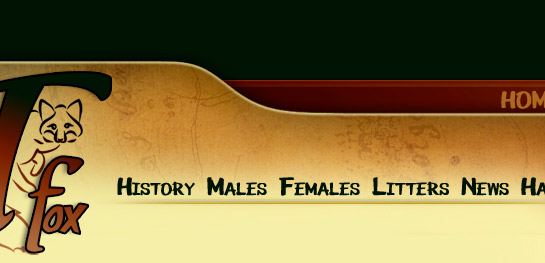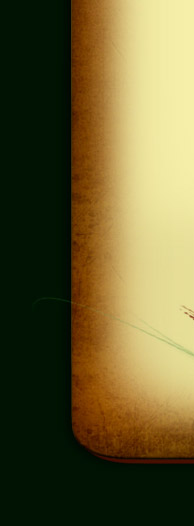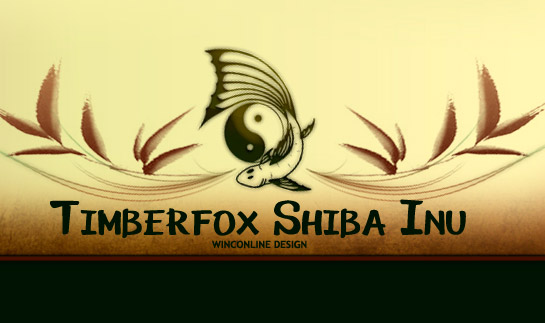
Link to the Shiba Standard PDF
Canadian Kennel Club -
SHIBA INU STANDARD
ORIGIN & PURPOSE
The Shiba was developed in Japan, and is the
smallest of the native Japanese breeds. Developed as a hunting
dog for boar, rabbit, grouse and other small game in dense
undergrowth, the Shiba needed strength, agility and a coarse
thick coat, as well as courage and tenacity. While still
retaining these hunting skills, the Shiba is now primarily an
excellent companion.
GENERAL APPEARANCE
The Shiba is a small dog of Spitz type, just
off-square, well balanced and muscular, with erect ears, dark
slanted eyes, tapered muzzle, and coarse standoff coat. Males
and females display both strength and elegance, neither coarse
nor fine, while retaining obvious differences. The overall
impression conveys a spirited boldness, good nature, alertness
and agility.
TEMPERAMENT
Spirited boldness, good nature, and
independence characterize the Shiba temperament. Extremely
lively and fun-loving with their families. While sometimes aloof
with strangers, aggression to humans or extreme shyness to be
severely penalized. Shibas may not tolerate other dogs'
intrusions, and will display aggression if challenged.
SIZE
Height: Dogs 39.5 cm (15 1/2"), bitches 36.5
cm (14 1/2"). There is a tolerance of 1.5 cm (5/8") shorter or
taller.
COAT & COLOUR
Double-coated, with the outer coat harsh and
straight, and undercoat soft and dense. Guard hair approximately
1" on body, 1 1/2-2" on withers. Hair on tail slightly longer
and forms a bristle, not a plume.
Colour: Red, Sesame, Black and Tan. These are the only
acceptable colours, and are to be given equal consideration.
Colour is clear and intense, with undercoat of cream, buff or
gray. "Urajiro" (creamy white ventral colour) is required on all
three allowed colours, in these areas: side of muzzle, cheeks,
inside ears, on underjaw and upper throat, inside of legs, on
abdomen, around vent, ventral side of tail. Cream does not
extend over nasal bridge. Cream spots above eyes, on tip of
tail, and on forechest permitted but not required. White
markings known as socks permitted but not desirable. Spots of
colour in the urajiro are highly undesirable. "Reverse mask"
(all cream/white face) is a fault.
Red: light red to deep orange red.
Sesame: red with black tipped hairs scattered evenly on body and
sometimes head, with no concentration in any one area. A widow's
peak may be seen on the forehead, leaving the bridge and muzzle
red.
Black and Tan: Black has rusty cast, not blue, and extends over
the entire dog. Clearly defined tan markings located over the
eye, sides of muzzle, "bowtie" pattern on forechest, outside of
forelegs from carpus to toes, outside of hind legs from stifle
down to toes, leaving black on rear of pasterns. Black
pencilling on toes permitted. Tan may be found inside of ears
and underside of tail.
HEAD
Skull: broad and flat with slight furrow,
cheek muscles well developed, and stop moderate. Muzzle: full
and round, tapering slightly to black nose, being 40% of total
head length. The nasal bridge straight, lower jaw strong. The
lips tight and black. Teeth: large, strong with scissors bite
and full dentition. Missing teeth to be faulted (note that
premolars are the most often missing), with five or more missing
a disqualification. Eyes: small, triangular, set well apart and
oblique (slanting up at outside corner). Dark brown in colour,
with black eyerims. Ears: small, thick, triangular, well-furred,
inclining forward and firmly pricked.
NECK
Thick and muscular, blends into shoulders. No
dewlap.
FOREQUARTERS
The shoulders moderately sloping, well
developed. The elbows set close to body, and forearms straight.
The pasterns slightly inclining. Feet are catlike with
well-arched toes fitting tightly together and thick pads. The
nails hard and darker colour desirable. Front dewclaws may be
removed.
BODY
Body is tight-skinned and well muscled. Height
to length ratio of 10 to 11, measured from withers to ground,
and point of shoulder to point of buttock. Bitches may be
slightly longer. Chest depth from withers to elbow one-half or
slightly less of total height. The chest deep, ribs moderately
sprung. Back straight and short, the loins broad and muscular,
the abdomen firm and well tucked-up.
HINDQUARTERS
The upper thighs long, and lower thighs short
and well developed, with a wide natural stance. Angulation in
balance with the forequarters. The hock joint strong. No
dewclaws. Feet as in front.
TAIL
Strong thick root, set high, carried in a
loose curl or curved as a sickle over back. The tip nearly
reaching hocks when let down
GAIT
Light, quick and elastic. Forward reach and
rear drive are moderate. Viewed from the front or rear, there is
a tendency to single track. Topline remains level and firm.
FAULTS
Light eye colour.
Level or extremely overshot bite.
1 to 4 missing teeth.
Reverse mask
DISQUALIFICATION
Under or over height.
Coat colours other than described.
Ears not pricked.
Tail not carried over back.
5 or more missing teeth.
Undershot bite.
Effective January 1, 2006
Illustrated Standard Courtesy of Shiba Inu Club of Canada
About the
Shiba Inu - History
The Shiba Inu
Standard
Are
you ready for a Shiba Inu?
|






